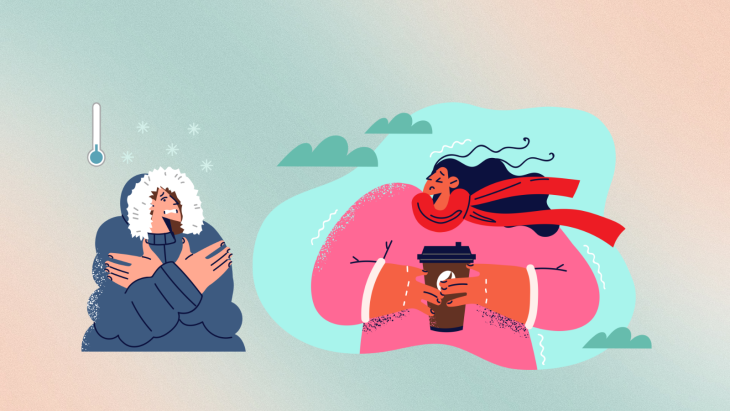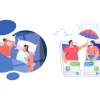Recent Posts
- Not feeling like yourself because of winter? What is seasonal affective disorder and why does the change in seasons make people feel bad?
- A big shift in hiring: Why is skills-based hiring taking off?
- Is it still possible to achieve inner peace and happiness in this busy and modern lifestyle?
- It hurts, but my teenage daughter said I need to develop some self awareness. I guess I should give it a try.
- What is broken heart syndrome and why are some people more vulnerable to it?
Most Popular
Not feeling like yourself because of winter? What is seasonal affective disorder and why does the change in seasons make people feel bad?

Almost half of the entire United States receives snow in a year, with others more briefly and less regularly than other states. Heaviest snowfall usually occurs in the months of January and February, where days become shorter and nights longer.
As seasons transition to becoming colder and days getting darker, we adjust our lifestyle to live in line with the challenges the season brings.
But what if the change in seasons brings with it a black cloud, only you can see and feel, that follows you around wherever you go and whatever you do?
Your energy drops lower than usual and your sleeping patterns get easily disrupted as temperatures drop. It comes to a point where it is hard for you to do your activities of daily living. The dark and gloomy feeling lasts for several months, but then resolves when spring comes around. Then it comes back again next year’s winter.
What is Seasonal Affective Disorder (SAD)?
Its other names include seasonal depression and winter depression. Seasonal Affective Disorder is a recognized type of depression under major depressive disorder following a seasonal pattern.
These signs and symptoms are similar to depression and they commonly happen during autumn and winter months. The decrease in access to sunlight seems to be a factor in developing Seasonal Affective Disorder.
In SAD, a person feels more sad or unhappy. But it is not a personal weakness or a condition that can be resolved by willpower alone. Studies show that there are changes in brain function during SAD.
Going to a mental health professional and treatment help people to decrease symptoms, and enjoy improvement of their symptoms.
SAD has other types including the summer-type SAD, but it is less common.
Symptoms of SAD
Changes in the brain result in shifts in one’s biological clock or circadian rhythm. As a result, sleep and wake times and daily schedules are affected. In addition, it prompts the body to crave for carbohydrates in response to lack of sleep, which contributes to weight gain. Research also suggests possible vitamin D deficiency as a possible cause for changes in hormonal activity in the brain.
Symptoms can be mild or severe and last for months. They include:
- Feeling sad
- Lack of interest in previously enjoyed activities
- Change in appetite, marked by cravings for carbohydrates
- Change in sleep patterns, some days it is hard to fall asleep, but other times, one tends to oversleep
- Fatigue despite getting many hours of sleep
- Lack of motivation to do physical activities
- Feeling lacking in purpose
- Having difficulty concentrating
- Having suicidal thoughts
Factors that can positively influence SAD symptoms
A diagnosis of SAD can be made through thorough mental examination and taking of health history by a mental health provider. The earlier you get help, the better you're able to minimize symptoms.
- Exposure to light. Getting sunlight by spending some time outdoors or staying near areas with sunlight eases symptoms.
- Light therapy. In areas where there is very little sunlight during cold months, people who receive light therapy through a special light feel better. You can ask your mental health professional for recommendations.
- Cognitive behavioral therapy. People with SAD alo feel the benefits of guided talk therapy where they get to identify sources of stress and learn ways to cope with them.
- Going out and spending time with others through physical activity. It is more challenging to engage in social activities when the weather is damp and cold, but occasional social activities help people with SAD feel better. These activities can be as simple as going for a walk in a mall, or going to the gym together with a friend.
Not understanding why you are more prone to SAD makes it more frustrating, but it is important to remember that many men and women are also experiencing challenges that changes in seasons bring. Find help from trusted sources to help you access treatment plans tailored to your needs, so you can live your best life in every season.
If you are in search of an amazing career opportunity in health care or in the mental health industry, check how a job board can help you find one now!







Comments